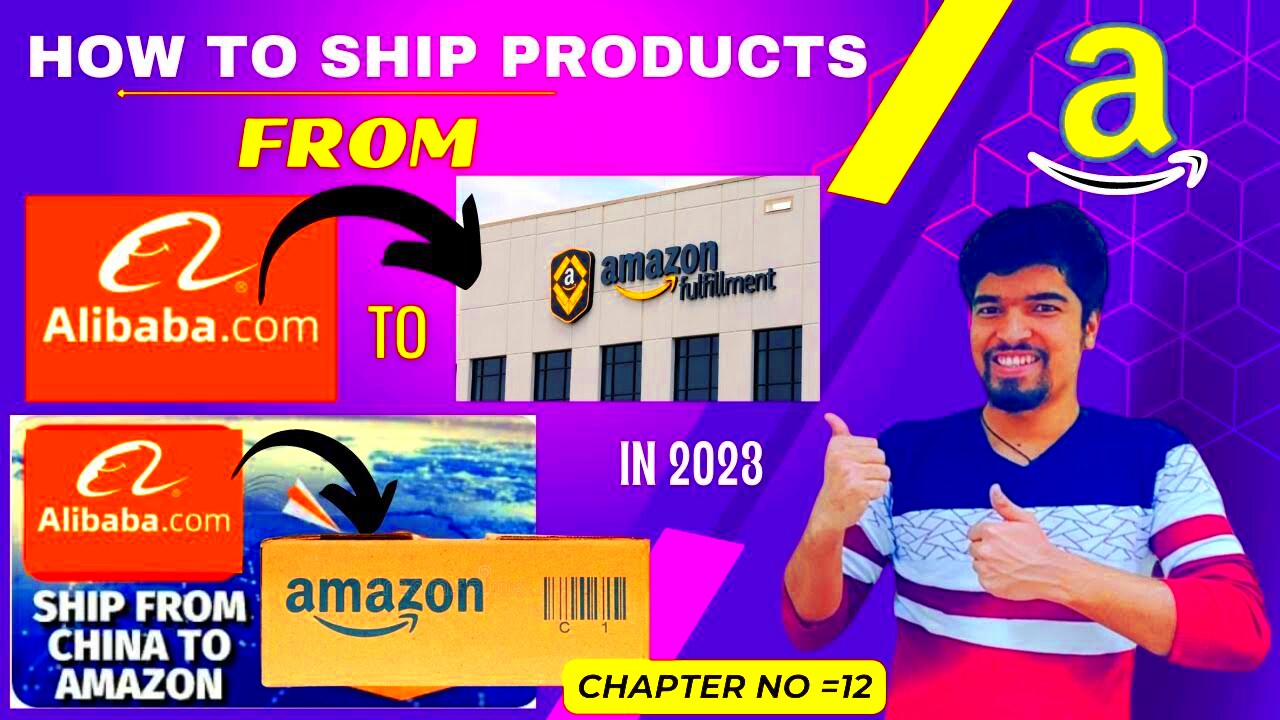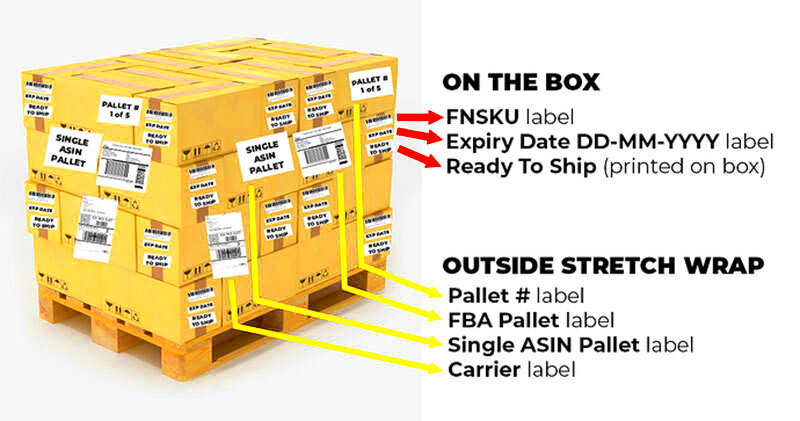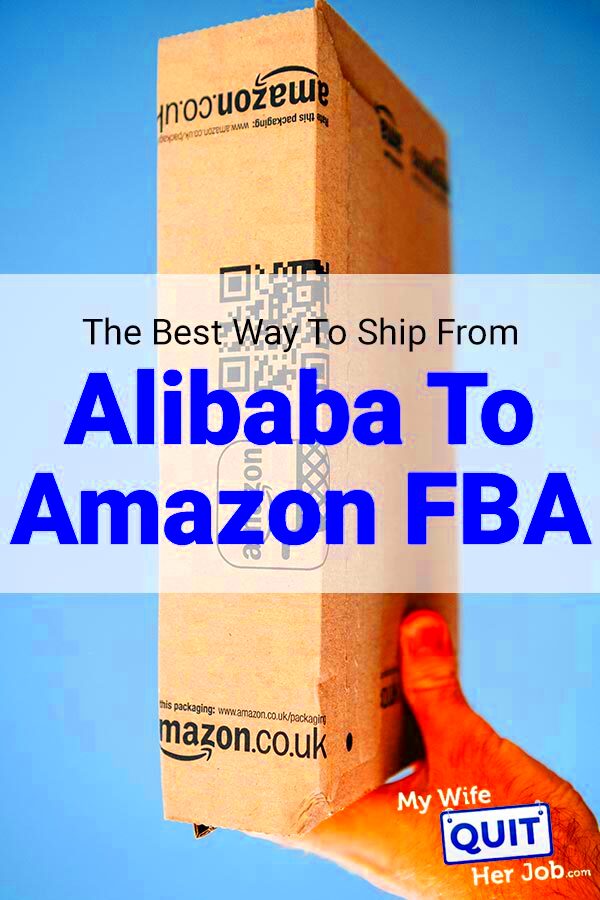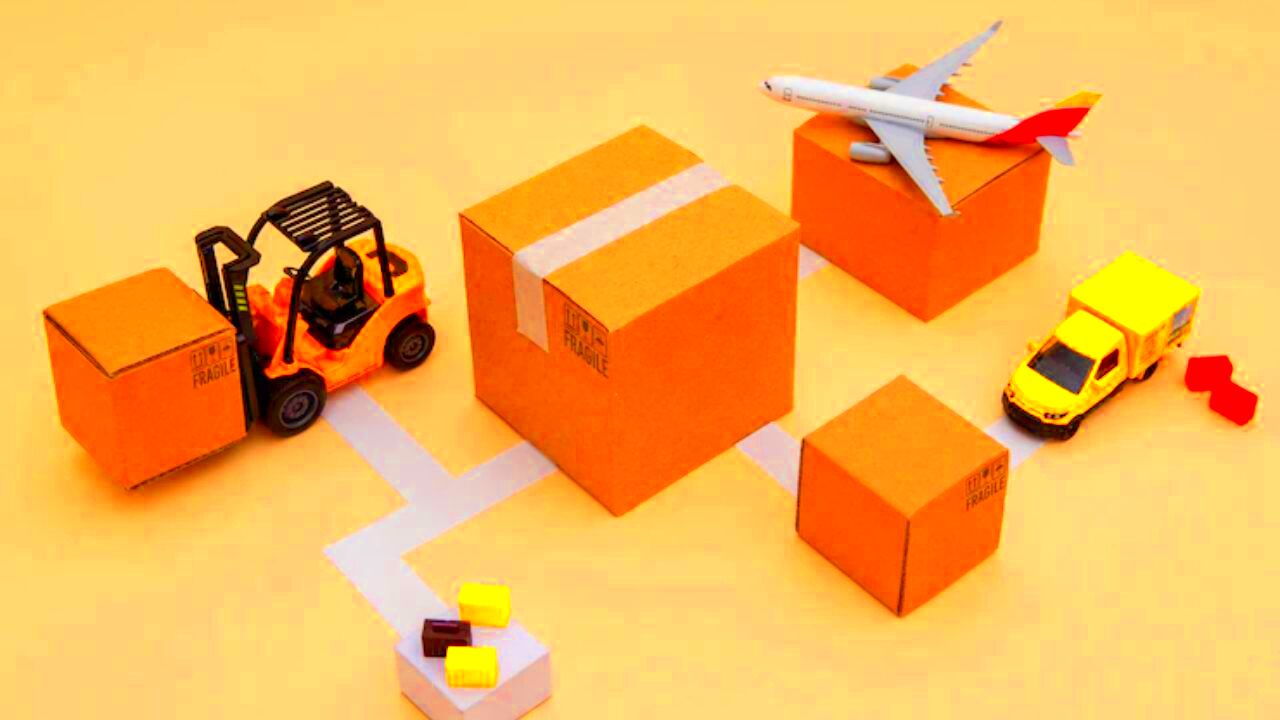Launching an business can feel like finding your way through a maze when it comes to shipping products from
Alibaba to Amazon. Believe me, I've experienced it firsthand. The process entails several steps, each with its own hurdles. However once you familiarize yourself with it, it becomes second nature. Lets take a closer look at the crucial stages involved in this journey starting from product sourcing to getting them listed on Amazon.The process begins by finding the products you want to ship. Next comes the task of organizing the logistics, which involves selecting a shipping method dealing with customs and making sure your items arrive at their destination intact. Each step is vital to ensure that your products not arrive on time but also uphold the quality standards you anticipate.
Here’s a breakdown of the shipping process:
- Product Sourcing: Finding and purchasing your products from Alibaba.
- Shipping Method: Deciding how your products will be transported.
- Customs Clearance: Navigating the paperwork and regulations.
- Delivery: Ensuring your products arrive at the Amazon warehouse.
- Listing: Getting your products listed on Amazon.
Every stage comes with its own responsibilities and factors to keep in mind. However by planning and staying organized you can ensure a seamless and effective workflow. Lets explore these phases more closely to give you insight into what to anticipate and how to navigate any potential obstacles.
Why Choose Alibaba for Your Product Sourcing?

Opting for
Alibaba as your sourcing platform can significantly impact your business. I have had the opportunity to source products via
Alibaba and I can attest to the wide range of choices available. With
Here’s why Alibaba stands out:
- Variety: From electronics to clothing, Alibaba hosts a diverse range of products. Whether you’re looking for a specific item or exploring new product ideas, Alibaba has something for everyone.
- Cost-Effective: The competitive pricing on Alibaba is a huge advantage. You can often find products at a fraction of the cost compared to local suppliers, which helps in maximizing your profit margins.
- Supplier Options: Alibaba offers access to numerous suppliers, including manufacturers and wholesalers. This variety allows you to choose suppliers that best fit your needs, whether you’re looking for high volume or custom orders.
While
Alibaba presents opportunities it's crucial to conduct your research. I recall a situation where I was entangled in a seemingly perfect deal. Fortunately by carefully examining the supplier and going through reviews I managed to steer clear of potential troubles. Always remember to check supplier ratings, customer feedback and validate product samples before reaching a conclusion.
How to Select the Right Supplier on Alibaba

Choosing a supplier on
Alibaba can be quite a task but it's essential to get it right. After going through a number of suppliers I can assure you that it's crucial to know what to watch out for and pose the questions. Here's a helpful guide to assist you in making a decision:
1. Check Supplier Credentials: Look for verified suppliers with good ratings. Alibaba provides a verification system where you can see if a supplier has been authenticated. Verified suppliers are more likely to be reliable.
2. Review Product Samples: Always request samples before placing a bulk order. This helps you assess the quality of the products and ensure they meet your standards.
3. Read Reviews and Ratings: Customer reviews are a goldmine of information. Look at feedback from other buyers to gauge the supplier’s reliability and product quality.
4. Communicate Clearly: Effective communication is key. Ensure the supplier understands your requirements and responds promptly to your queries. Clear communication can prevent misunderstandings and potential issues down the line.
5. Negotiate Terms: Don’t be afraid to negotiate terms, including price, payment methods, and delivery schedules. Many suppliers are open to negotiation, especially if you’re placing a large order.Based on what I've seen investing time in thoroughly screening your suppliers can spare you from quite a few troubles. I had a situation where a supplier made a strong first impression but communication issues resulted in a shipment delay. By diligently verifying references and keeping lines of communication open you can streamline the process and establish a trustworthy collaboration.
Preparing Your Products for Shipping

Getting your items ready for shipping may appear to be a routine job but it's essential to make sure they reach their destination in excellent condition. I recall my initial large shipment it felt quite daunting at first. However with some planning everything fell into place seamlessly. Here's a helpful guide to assist you in prepping your products.
1. Quality Check: Before packing, inspect each product for quality. Make sure there are no defects or damages. For instance, I once received a batch of products with minor scratches because the supplier didn’t pack them properly. A quick quality check saved me from dealing with customer complaints later.
2. Packaging: Proper packaging is vital. Use durable materials to protect your products during transit. Consider using:
- Bubble Wrap: Great for fragile items.
- Foam Inserts: Helps in keeping products in place.
- Cardboard Boxes: Ensure they are sturdy and the right size.
3. Labeling: Accurate labeling speeds up the shipping process and avoids confusion. Include details like product name, quantity, and destination address. A mistake I once made was using incorrect labels, which delayed the shipment. So, double-check your labels to avoid such issues.
4. Documentation: Prepare all necessary shipping documents, including invoices and packing lists. This documentation helps in smooth customs clearance and provides a record of the shipment.By taking these measures you can make sure that your items are ready for their journey. Getting things ready not safeguards your products but also makes the shipping process go more smoothly.
Choosing the Best Shipping Method

Picking the shipping option is similar to picking the car for a journey it’s about finding the right mix of speed, affordability and dependability. Based on my experiences I’ve discovered that there isn’t a universal answer. Here’s a guide on how to select the shipping approach for your requirements.
1. Air Freight: Ideal for fast deliveries and high-value items. It’s more expensive, but the speed and security make it worth the cost for urgent shipments. I once used air freight for a product launch, and it arrived just in time, making a huge difference in meeting the launch date.
2. Sea Freight: Cost-effective for large shipments but slower than air freight. If you’re not in a hurry and want to save on shipping costs, sea freight is a good option. It’s what I use for bulk orders; it’s affordable and fits my budget well.
3. Courier Services: For small and medium-sized shipments, courier services like DHL or FedEx offer reliable and efficient options. They handle customs and provide tracking, which is convenient for both you and your customers.
4. Consolidated Shipping: This method involves combining multiple shipments into one. It’s cost-effective but might take longer. I’ve found it useful for managing shipping costs when dealing with multiple suppliers.Each approach comes with its advantages and disadvantages. So take into account things such as how quickly you need it done your budget and the type of products you have when making your decision. By thoughtfully considering these factors you can make sure that your shipping method aligns with your business requirements and objectives.
Handling Customs and Duties Efficiently
1. Understand Customs Regulations: Familiarize yourself with the customs regulations of both your country and the destination country. This includes understanding tariffs, prohibited items, and required documentation. I once faced delays because I didn’t fully grasp the regulations, so taking the time to research can save you a lot of headaches.
2. Accurate Documentation: Ensure all shipping documents, including commercial invoices and packing lists, are completed accurately. Incorrect or missing information can lead to delays or additional fees. Double-check everything before sending your shipment to avoid these issues.
3. Pay Duties and Taxes: Be prepared to pay any duties and taxes associated with your shipment. These fees can vary based on the product type and value. It’s wise to factor these costs into your budget. I always set aside a portion of my budget for potential duties and taxes to avoid unexpected expenses.
4. Use a Customs Broker: If customs procedures seem overwhelming, consider hiring a customs broker. They can handle the paperwork, ensure compliance with regulations, and help expedite the process. I’ve found having a broker immensely helpful in streamlining customs clearance.By understanding and managing these aspects efficiently, you can avoid delays and additional costs. Proper preparation and attention to detail will make the customs process smoother, allowing you to focus on other important areas of your business.
Tracking Your Shipment and Ensuring Delivery
Staying updated on your shipment is akin to monitoring a long anticipated arrival—there's an element of thrill mixed with anxiety. Based on my encounters I've come to realize that efficient tracking plays a role in ensuring a seamless delivery experience. Allow me to share some tips on how you can keep track of your shipment and guarantee its smooth arrival at the destination.
1. Use Tracking Tools: Most shipping services offer tracking tools that let you monitor your shipment in real-time. By entering your tracking number, you can see exactly where your package is at any given moment. I once had a shipment delayed because I didn’t regularly check the tracking updates. Since then, I make it a habit to track my shipments daily to avoid surprises.
2. Set Up Notifications: Many carriers allow you to set up email or SMS notifications. These updates can inform you of any delays or issues with your shipment. It’s a lifesaver for staying informed without constantly checking the tracking page.
3. Communicate with Your Carrier: If you notice any issues or delays, don’t hesitate to contact your carrier. They can provide more detailed information and help resolve problems. I remember a time when a misrouted shipment was quickly resolved thanks to a prompt call to the carrier.
4. Ensure Proper Delivery Instructions: Make sure the delivery address is accurate and detailed. This helps avoid misdeliveries. I once had a package mistakenly delivered to the wrong address because the details weren’t clear enough. Double-checking your delivery instructions can save you from such hassles.To keep tabs on your shipment and make sure it arrives on time, it's important to be proactive and stay in the loop. By taking these steps you can reduce the chances of delays and ensure that your products reach their destination safely and punctually.
Tips for a Smooth Transition from Alibaba to Amazon
Shifting from Alibaba to Amazon is similar to going from a crowded marketplace to a modern retail outlet it does take some getting used to. I’ve gone through this switch a few times and although it can be tough with the mindset it is certainly doable. Here are a few suggestions to help you make your transition as seamless. As possible.
1. Plan Ahead: Start planning your transition well in advance. Understand Amazon’s requirements for product listings, packaging, and labeling. I once underestimated the preparation needed, which led to a rushed and stressful transition. By planning ahead, you can ensure a smoother process.
2. Optimize Your Product Listings: Create detailed and compelling product listings on Amazon. Use high-quality images, write clear descriptions, and optimize for relevant keywords. Good listings attract customers and improve your sales performance. I’ve seen a significant increase in sales just by improving my product listings.
3. Familiarize Yourself with Amazon’s Policies: Amazon has specific rules regarding product listings, returns, and customer service. Ensure you understand these policies to avoid any issues. I’ve had to adjust my approach a few times to align with Amazon’s policies, and it’s always better to be informed from the start.
4. Monitor and Adjust: After your products are live on Amazon, keep an eye on sales, customer feedback, and inventory levels. Be prepared to make adjustments based on performance and feedback. Regular monitoring has helped me make timely changes that improved my product’s performance.By implementing these strategies you can streamline the process of moving from Alibaba to Amazon. Careful preparation, optimization and keeping yourself updated are essential for ensuring a successful transition.
FAQ
1. How long does shipping from Alibaba to Amazon take?
The shipping time depends on the method you choose. Air freight is faster, taking around 7-10 days, while sea freight can take 30-45 days. Always factor in additional time for customs clearance.
2. What are the costs involved in shipping from Alibaba?
Costs include the product price, shipping fees, customs duties, and potential taxes. Shipping costs vary based on the method, weight, and destination. It’s wise to get a detailed cost breakdown from your supplier and shipping carrier.
3. Can I use Alibaba suppliers for Amazon FBA (Fulfillment by Amazon)?
Yes, you can use Alibaba suppliers for Amazon FBA. Just ensure that the supplier can meet Amazon’s packaging and labeling requirements. It's important to communicate these requirements clearly to avoid any issues.
4. How do I handle a shipment delay?
If there’s a delay, first check the tracking information for updates. If needed, contact the carrier for more details. Communicate with your customers about the delay to manage their expectations and reduce potential frustration.
5. What should I do if my products are damaged during shipping?
Document the damage with photos and report it to your supplier and shipping carrier immediately. Most suppliers have policies for handling damaged goods, and your carrier might offer compensation for damaged items.While these FAQs cover some questions it's important to maintain communication with your supplier and carrier to address any specific issues you may face.
Conclusion
Making the move from Alibaba to Amazon is like driving down a road with its ups and downs. From finding products to making sure they get delivered on time each step has its own challenges and opportunities. Through my experiences I’ve learned that success comes from careful planning, clear communication and being open to change.By following the tips mentioned like getting your products ready picking the shipping method and knowing customs rules you can make this transition smoother and set your business up for success. Keep in mind that although the journey may be bumpy at times staying informed and proactive will help you overcome hurdles and reach your destination, with confidence. Here’s wishing you a journey, from Alibaba to Amazon where your dedication and thoughtful preparation lead to success.
 Opting for Alibaba as your sourcing platform can significantly impact your business. I have had the opportunity to source products via Alibaba and I can attest to the wide range of choices available. With
Opting for Alibaba as your sourcing platform can significantly impact your business. I have had the opportunity to source products via Alibaba and I can attest to the wide range of choices available. With Choosing a supplier on Alibaba can be quite a task but it's essential to get it right. After going through a number of suppliers I can assure you that it's crucial to know what to watch out for and pose the questions. Here's a helpful guide to assist you in making a decision:1. Check Supplier Credentials: Look for verified suppliers with good ratings. Alibaba provides a verification system where you can see if a supplier has been authenticated. Verified suppliers are more likely to be reliable.2. Review Product Samples: Always request samples before placing a bulk order. This helps you assess the quality of the products and ensure they meet your standards.3. Read Reviews and Ratings: Customer reviews are a goldmine of information. Look at feedback from other buyers to gauge the supplier’s reliability and product quality.4. Communicate Clearly: Effective communication is key. Ensure the supplier understands your requirements and responds promptly to your queries. Clear communication can prevent misunderstandings and potential issues down the line.5. Negotiate Terms: Don’t be afraid to negotiate terms, including price, payment methods, and delivery schedules. Many suppliers are open to negotiation, especially if you’re placing a large order.Based on what I've seen investing time in thoroughly screening your suppliers can spare you from quite a few troubles. I had a situation where a supplier made a strong first impression but communication issues resulted in a shipment delay. By diligently verifying references and keeping lines of communication open you can streamline the process and establish a trustworthy collaboration.
Choosing a supplier on Alibaba can be quite a task but it's essential to get it right. After going through a number of suppliers I can assure you that it's crucial to know what to watch out for and pose the questions. Here's a helpful guide to assist you in making a decision:1. Check Supplier Credentials: Look for verified suppliers with good ratings. Alibaba provides a verification system where you can see if a supplier has been authenticated. Verified suppliers are more likely to be reliable.2. Review Product Samples: Always request samples before placing a bulk order. This helps you assess the quality of the products and ensure they meet your standards.3. Read Reviews and Ratings: Customer reviews are a goldmine of information. Look at feedback from other buyers to gauge the supplier’s reliability and product quality.4. Communicate Clearly: Effective communication is key. Ensure the supplier understands your requirements and responds promptly to your queries. Clear communication can prevent misunderstandings and potential issues down the line.5. Negotiate Terms: Don’t be afraid to negotiate terms, including price, payment methods, and delivery schedules. Many suppliers are open to negotiation, especially if you’re placing a large order.Based on what I've seen investing time in thoroughly screening your suppliers can spare you from quite a few troubles. I had a situation where a supplier made a strong first impression but communication issues resulted in a shipment delay. By diligently verifying references and keeping lines of communication open you can streamline the process and establish a trustworthy collaboration. Getting your items ready for shipping may appear to be a routine job but it's essential to make sure they reach their destination in excellent condition. I recall my initial large shipment it felt quite daunting at first. However with some planning everything fell into place seamlessly. Here's a helpful guide to assist you in prepping your products.1. Quality Check: Before packing, inspect each product for quality. Make sure there are no defects or damages. For instance, I once received a batch of products with minor scratches because the supplier didn’t pack them properly. A quick quality check saved me from dealing with customer complaints later.2. Packaging: Proper packaging is vital. Use durable materials to protect your products during transit. Consider using:
Getting your items ready for shipping may appear to be a routine job but it's essential to make sure they reach their destination in excellent condition. I recall my initial large shipment it felt quite daunting at first. However with some planning everything fell into place seamlessly. Here's a helpful guide to assist you in prepping your products.1. Quality Check: Before packing, inspect each product for quality. Make sure there are no defects or damages. For instance, I once received a batch of products with minor scratches because the supplier didn’t pack them properly. A quick quality check saved me from dealing with customer complaints later.2. Packaging: Proper packaging is vital. Use durable materials to protect your products during transit. Consider using: Picking the shipping option is similar to picking the car for a journey it’s about finding the right mix of speed, affordability and dependability. Based on my experiences I’ve discovered that there isn’t a universal answer. Here’s a guide on how to select the shipping approach for your requirements.1. Air Freight: Ideal for fast deliveries and high-value items. It’s more expensive, but the speed and security make it worth the cost for urgent shipments. I once used air freight for a product launch, and it arrived just in time, making a huge difference in meeting the launch date.2. Sea Freight: Cost-effective for large shipments but slower than air freight. If you’re not in a hurry and want to save on shipping costs, sea freight is a good option. It’s what I use for bulk orders; it’s affordable and fits my budget well.3. Courier Services: For small and medium-sized shipments, courier services like DHL or FedEx offer reliable and efficient options. They handle customs and provide tracking, which is convenient for both you and your customers.4. Consolidated Shipping: This method involves combining multiple shipments into one. It’s cost-effective but might take longer. I’ve found it useful for managing shipping costs when dealing with multiple suppliers.Each approach comes with its advantages and disadvantages. So take into account things such as how quickly you need it done your budget and the type of products you have when making your decision. By thoughtfully considering these factors you can make sure that your shipping method aligns with your business requirements and objectives.
Picking the shipping option is similar to picking the car for a journey it’s about finding the right mix of speed, affordability and dependability. Based on my experiences I’ve discovered that there isn’t a universal answer. Here’s a guide on how to select the shipping approach for your requirements.1. Air Freight: Ideal for fast deliveries and high-value items. It’s more expensive, but the speed and security make it worth the cost for urgent shipments. I once used air freight for a product launch, and it arrived just in time, making a huge difference in meeting the launch date.2. Sea Freight: Cost-effective for large shipments but slower than air freight. If you’re not in a hurry and want to save on shipping costs, sea freight is a good option. It’s what I use for bulk orders; it’s affordable and fits my budget well.3. Courier Services: For small and medium-sized shipments, courier services like DHL or FedEx offer reliable and efficient options. They handle customs and provide tracking, which is convenient for both you and your customers.4. Consolidated Shipping: This method involves combining multiple shipments into one. It’s cost-effective but might take longer. I’ve found it useful for managing shipping costs when dealing with multiple suppliers.Each approach comes with its advantages and disadvantages. So take into account things such as how quickly you need it done your budget and the type of products you have when making your decision. By thoughtfully considering these factors you can make sure that your shipping method aligns with your business requirements and objectives.
 admin
admin








